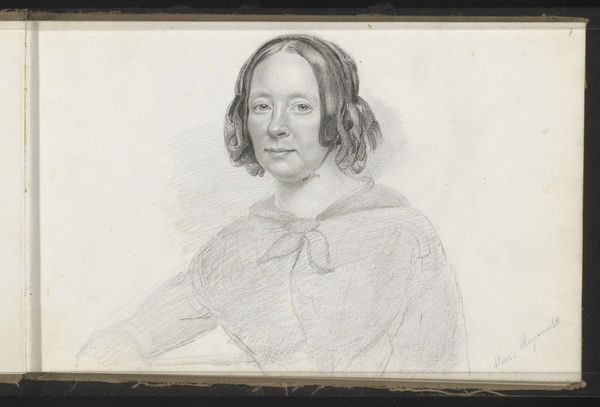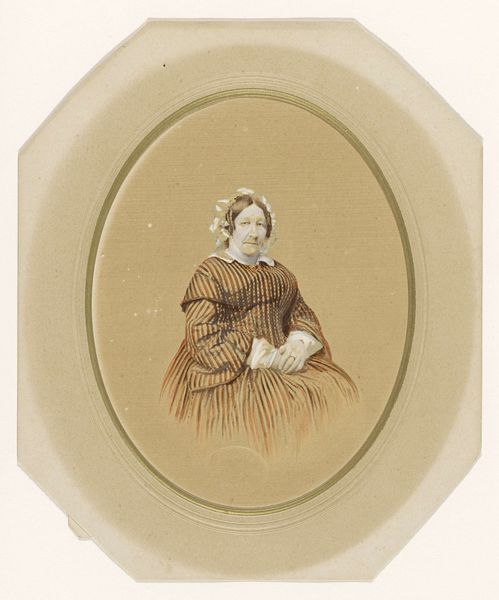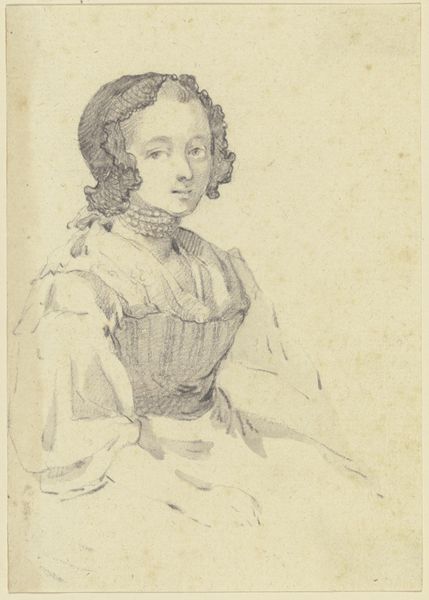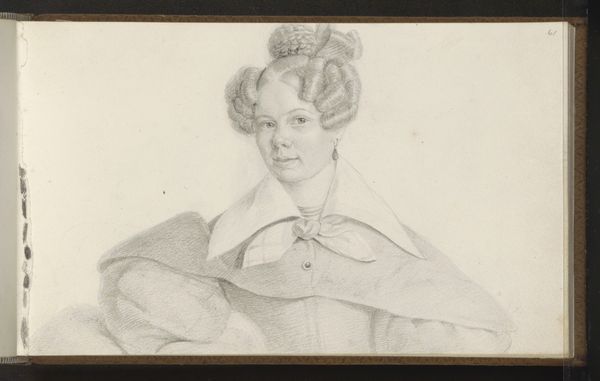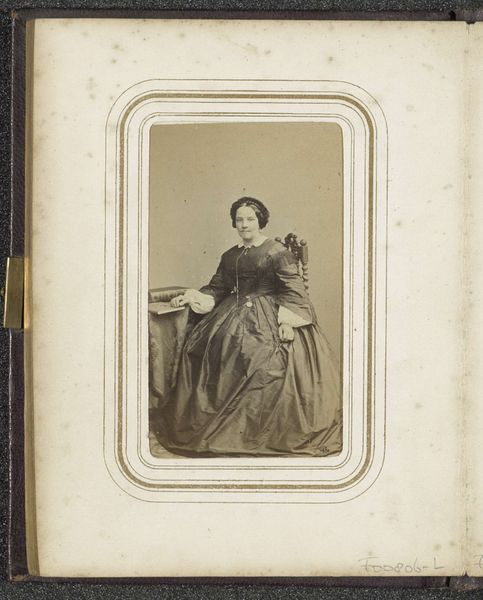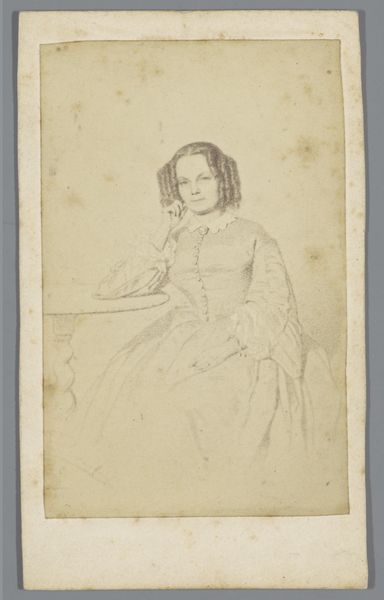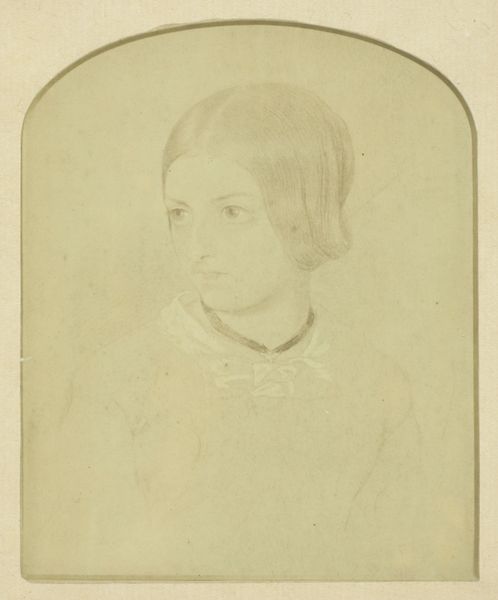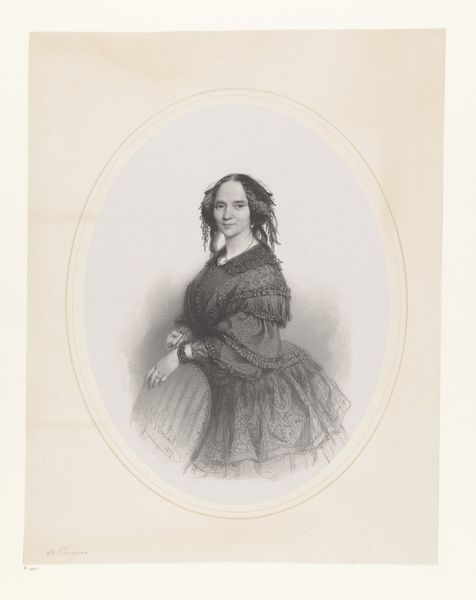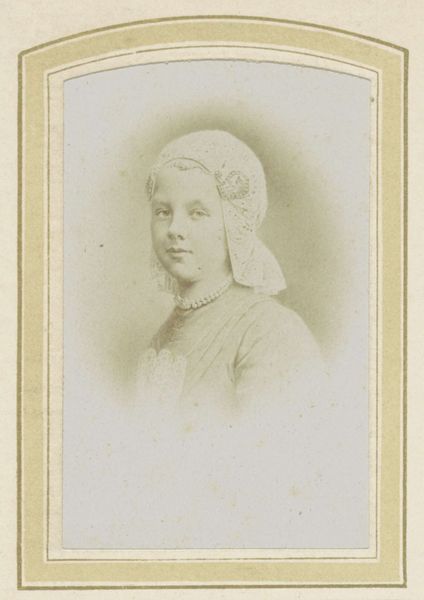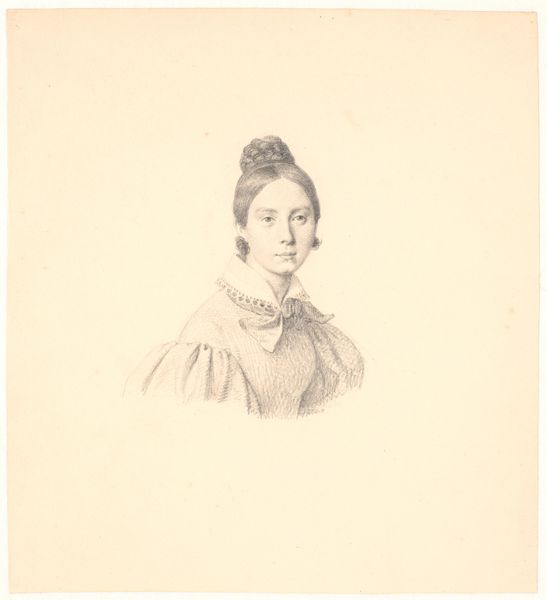
drawing, pencil
portrait
drawing
charcoal drawing
pencil drawing
pencil
portrait drawing
academic-art
realism
Copyright: Rijks Museum: Open Domain
Editor: At first glance, this piece gives off a rather austere and reserved feeling, almost like a memory fading. Curator: That's an astute observation. We are looking at "Portret van een vrouw," a pencil drawing created by Christian Heinrich Gottlieb Steuerwald sometime between 1848 and 1854. Notice the subtle realism he achieves through delicate gradations of tone. Editor: The medium definitely contributes to the overall effect. Pencil on paper; such humble materials for capturing a likeness! What can you tell me about Steuerwald's technique? Curator: He exhibits a command of line and shading characteristic of academic art training. See how the cross-hatching builds up the forms, giving weight and volume to her face and clothing? It reflects close observation. Editor: And it really grounds the work. The dress itself, that modest shawl and ruffled collar – the materials almost whisper of the labor and cost involved in their production back then. How did he manipulate the pencil? Curator: Indeed. His nuanced touch emphasizes the sitter's introspective gaze, and also notice the slightly asymmetrical composition. It gives it a more organic, rather than rigidly formal presence. Editor: That imperfection is intriguing! Considering the period, do you see the potential to see this not just as academic realism, but a kind of precursor of the social realism of the 20th century? Showing the labour and lives of an every day person Curator: Well, perhaps we see through a particular lens. Although it certainly captures her external features and, through close engagement, something of her inner life too. The portrait transcends pure documentation. Editor: Precisely! The hand of the artist mediates our encounter with her life, revealed to us by her image. This reminds me again of the intimate, yet accessible, appeal of such relatively simple medium such as the pencil itself. Curator: Yes, Steuerwald has offered us more than just a rendering; he has frozen a fleeting moment. That engagement between sitter, artist, and viewer continues to fascinate even now. Editor: Absolutely. The simplicity of the piece emphasizes those critical relationships—the social relations of material, artist, and the sitter! I’ll be contemplating this piece from now on in a new light.
Comments
No comments
Be the first to comment and join the conversation on the ultimate creative platform.

